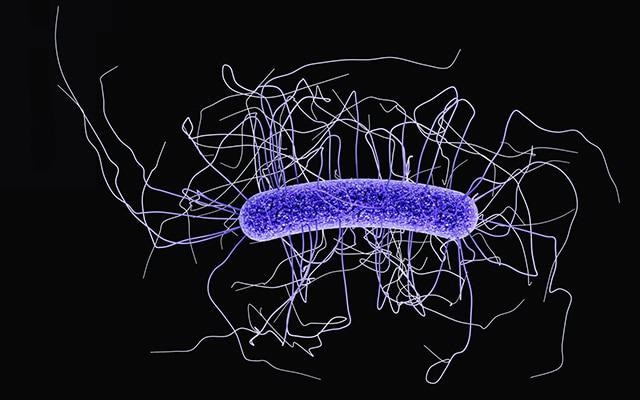Researchers from Jacobs School of Engineering and the University of California San Diego School of Medicine collaborated with colleagues from Baylor College of Medicine to decode the genetic diversity of Clostridioides difficile, an especially dangerous pathogen in healthcare settings, using a systems biology technique.
 An illustration of a Clostridoides difficile bacillus, a common cause of antibiotic-associated intestinal illness. Image Credit: Centers for Disease Control and Prevention.
An illustration of a Clostridoides difficile bacillus, a common cause of antibiotic-associated intestinal illness. Image Credit: Centers for Disease Control and Prevention.
According to the Centers for Disease Control analysis, the bacteria causes around 500,000 infections in the United States each year, with severe diarrhea and colitis (colon inflammation) as common symptoms.
The findings of the researchers were reported in the online issue of PNAS on April 27th, 2022.
C. difficile is the most common cause of hospital-associated infections, thanks in part to the widespread use of antibiotics, which can destroy enough beneficial bacteria to enable C. difficile to proliferate. Infections are more hazardous in older persons. According to the CDC, one out of every eleven persons over the age of 65 who might be diagnosed with C. difficile in a hospital die within one month.
C. difficile is persistent and pervasive. It does not cause typical diarrhea. Most people do recover, but some become seriously ill, require hospitalization and some die from complications like kidney failure or sepsis.”
Jonathan M. Monk, PhD, Study Senior Author and Research Scientist, Systems Biology Research Group, University of California San Diego
Bernhard O. Palsson, PhD, professor of bioengineering and adjunct professor at the UC San Diego School of Medicine, directed senior author Monk.
Researchers employed whole-genome sequencing, greater phenotypic screening, and metabolic modeling of 451 bacterial strains to help understand the genetic properties of C. difficile—and so construct models that can identify and predict its complicated and constant development.
This information was utilized to create a “pangenome,” or a complete collection of genes typical of all known C. difficile strains, from which researchers identified 9,924 unique gene clusters, including 2,899 core (found in all strains) and 7,025 “accessory” gene clusters (present in few strains but missing in others).
Researchers classified 176 genetically different strain groupings using a novel typing approach.
Typing by accessory genome allows for the discovery of newly acquired genes in genomes of pathogens that may otherwise go unnoticed with standard typing methods. This could be critical in understanding what drives an outbreak and how to fight its spread.”
Jennifer K. Spinler, PhD, Study Co-Author and Instructor, Pathology and Immunology, Baylor College of Medicine
The whole collection of 35 strains was experimentally evaluated using 95 different nutrient sources, yielding 26 different growth profiles. The researchers then created 451 strain-specific genome-scale metabolic models to generate phenotypic variety in 28,864 different situations computationally. In 76% of the situations studied, the models properly predicted an increase.
One of the strengths of the presented work is the cohesion of distinct biological data types into comprehensive systems biology frameworks that enable analysis at scale. By interpreting strains of C. difficile in a population context, we were able to bring to light pertinent strain features regarding nutrient niche, virulence factors, and antimicrobial resistance determinants that might have otherwise gone undetected.”
Charles J. Norsigian, PhD, Study First Author and Data Scientist, Systems Biology Research Group, University of California San Diego
Source:
Journal reference:
Norsigian, C. J., et al. (2022) Systems biology approach to functionally assess the Clostridioides difficile pangenome reveals genetic diversity with discriminatory power. PNAS. doi.org/10.1073/pnas.2119396119.